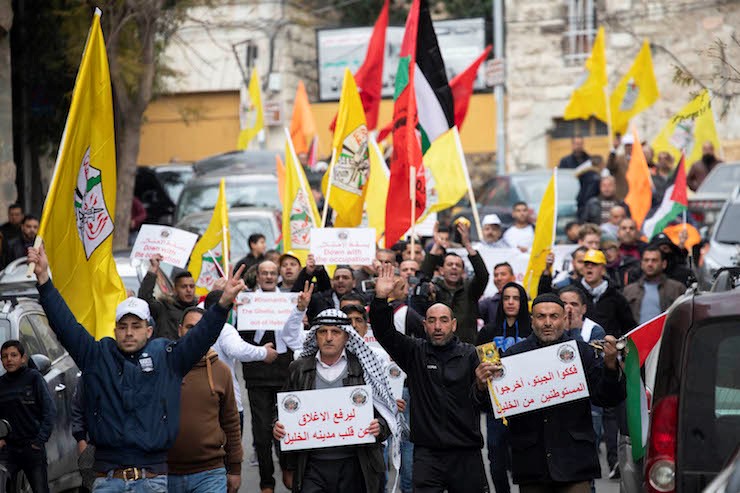Monday of this week, February 25, marked 25 years since the American-Israeli racist settler Baruch Goldstein opened fire on worshipers in the Ibrahimi Mosque (Cave of the Patriarchs) in Hebron, killing 29 Palestinian Moslem worshipers and wounding over 100 others. While the massacre was widely condemned at the time by many within Israel and the international community, undoubtedly due to its magnitude, grievous attacks against Palestinians in Hebron are still a daily occurrence a quarter of a century after the heinous 1994 terrorist act by the Brooklyn-born Jewish medical doctor. This is because a culture of impunity, nurtured the by gross inaction of the Israeli occupation forces and courts, enables settlers to frequently commit acts of violence against Palestinians and their property, with virtually no chance of ever being held responsible.

Hundreds of Palestinian, Israeli and international protesters march in Hebron to demand the end of settlements and segregation in the city, February 22, 2019. (Photo: Activestills)
According to data collected by Yesh Din, an Israeli human rights group which monitors and documents incidents of ideologically motivated attacks against Palestinians, the percent of cases that involve physical violence in Hebron is significantly higher (63%) than in the rest of the occupied West Bank (35%). Of the investigations undertaken by Israeli military authorities in Hebron, 76% were closed with no indictment, and 83% of these were closed under circumstances pointing to a failed investigation. In addition, the rate of legal proceedings that are concluded with an Israeli defendant being found guilty, but not sentenced to prison, stands at 21% compared to 6% for all cases adjudicated in Israeli courts. Furthermore, in at least 13% (the actual rate is likely higher) of the recorded cases from Hebron, Israeli soldiers stood idly by or actually took part in the offense.
These data were gathered from incidents that have occurred in Hebron despite the presence of two international monitoring bodies which were dispatched to the Palestinian city following the 1994 massacre, but which are no longer present there – the Temporary International Presence in Hebron (TIPH) and the Ecumenical Accompaniment Program in Palestine and Israel (EAPPI). Israel announced its decision to expel the TIPH at the end of January, after which the World Council of Churches decided to withdraw its EAPPI monitors due to concerns for their safety following an escalation in violence.
According to Yesh Din, the departure of these two bodies “has the potential to cause the situation to deteriorate even further and could possibly embolden violent settlers due to their absence.” The rights organization contends that this situation is exacerbated even more by the recent “political legitimacy” bequeathed the racist Kahanist ideology that motivated the terrorist massacre carried out by Baruch Goldstein. Up until the day of the massacre, at the end of which Goldstein was overcome and killed inside the mosque, the depraved MD was a leading member of the Kahane movement. Last week, Prime Minister Benjamin Netanyahu encouraged the Jewish Home party to include candidates from Otzma Yehudit (a party made up of Kahane ideologues) in a combined list for the upcoming Knesset elections to ensure that the ballots cast by the most fanatical dregs of the Israeli far-right for Otzma Yehudit will not be “lost” because, on its own, the party would unlikely garner the 3.25% of the total ballots cast to pass the electoral threshold. As part of the combined lists with the Jewish Home party, it is virtually certain that two or more Cahane supporters from Otzma Yehudit will enter the 21st Knesset.


